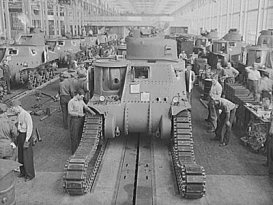Waiting for the Next Generation of STEM Workers
With the recent economy, manufacturing lost a projected 2.3 million jobs and has only added about 300,000 of those back since 2007. The reason? Recent keynotes at “Manufacturing Perspectives,” hosted at Rockwell Automation’s Autmation Fair in mid-November in Chicago, cites a lack of skilled workers as the cause.
 The article states that about 600,000 STEM (Science, Technology, Engineering Mathematics)-related vacancies remain unfilled in the U.S. due to a shortage of skilled workers. It is both an educational issue and a PR one, according to John Nesi, vp of market development for Rockwell Automation. The workers from the automation boom of the late ‘70s are now beginning to retire and take with them their skill set, which combines education and experience built up over the years.
The article states that about 600,000 STEM (Science, Technology, Engineering Mathematics)-related vacancies remain unfilled in the U.S. due to a shortage of skilled workers. It is both an educational issue and a PR one, according to John Nesi, vp of market development for Rockwell Automation. The workers from the automation boom of the late ‘70s are now beginning to retire and take with them their skill set, which combines education and experience built up over the years.
Should an apprenticeship program be the new education model to create skilled workers in the U.S.? Germany and Japan both have apprenticeship style educational opportunities. MAG IAS, LLC was recently featured on NBC Nightly News, highlighting their novel apprenticeship program.
The bottom line is, according to Tom Duesterberg, Executive Director of the Manufacturing and Society in the 21st Century program at the Aspen Institute, “The U.S. is not training enough scientists and engineers; further, the quality of workers we need to fill these positions is not what it should be.”










